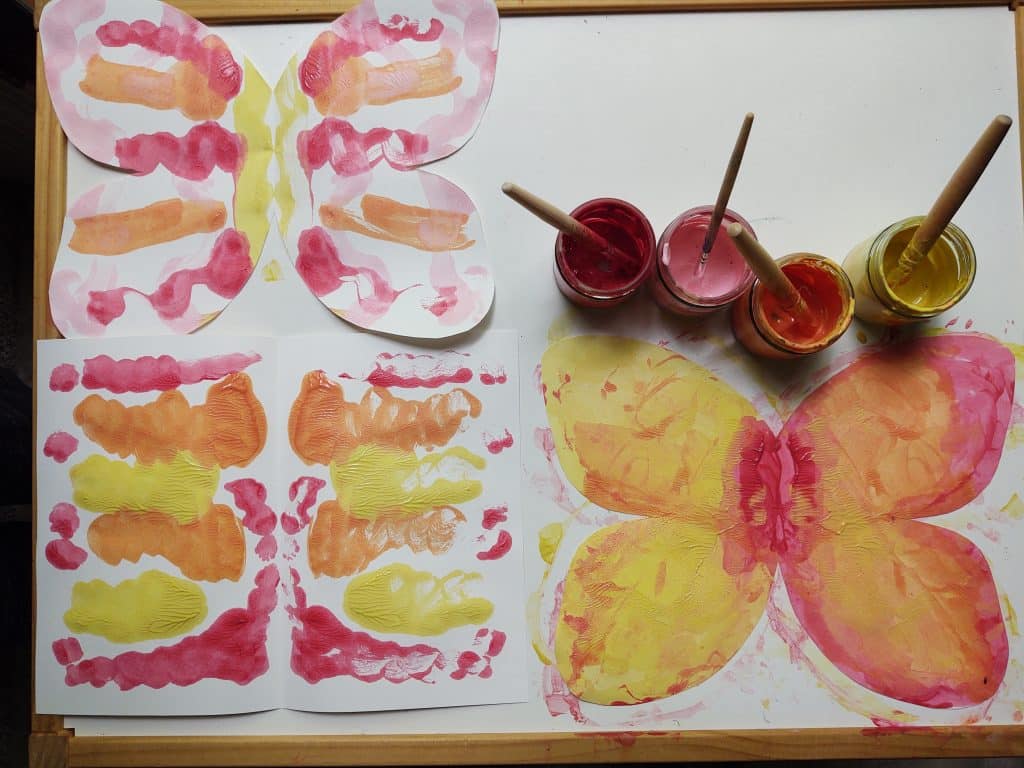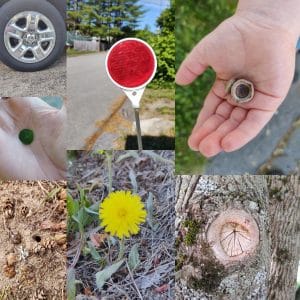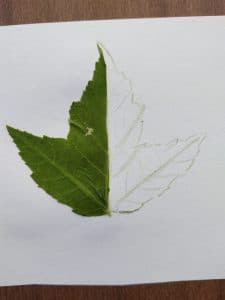
Nature provides so many great ways to explore math concepts, and shapes and symmetry are a perfect place to start. After all, complex forms and patterns have been present in nature much longer than people have been around to describe them!
Watch this week’s video for a symmetrical butterfly art tutorial, then read on for more ways to explore these concepts:
When you are OUTSIDE:
- Go on a shape hunt: Pick a familiar shape and look for both natural and man-made of examples of it. For example, you might spot circles in the center of a flower, a manhole cover, and the top of a stump. Or, see how many different shapes you can spot! Treat this less like a quiz and more of an opportunity for discussion: what shape is the moon today? Does that change? Is a dandelion seed head a circle or a sphere?

- Bring sidewalk chalk outside and experiment with tracing shapes and shadows. Try drawing a shape and filling it with leaves or stones. Adding features to a body tracing is always fun, and it’s also a great way to explore the symmetry of our own bodies as you add two eyes, ears, etc.
- Making nature mandalas is a meditative activity that can be done anywhere. Using (responsibly collected) loose parts available in a given habitat means that your mandala will reflect the place where you made it. The word mandala comes from the Sanskrit word for circle, and these radiating patterns show up frequently in nature and across cultures. Once you start making mandalas be prepared to notice them everywhere!
Keep exploring INSIDE with:
- For a slightly more challenging approach to symmetrical art, try making some “draw the other half” prompts. You can cut a leaf in half and glue it to your paper, or download a free printable here.

- Can you create an animal out of geometric shapes? For example, maybe a triangle becomes the wing of a bird or a fox’s ear! Start by drawing a shape on paper for your child to work from, or provide an assortment of cutout pieces for open-ended shape art. For a more puzzle-oriented spin on shapes, download a printable tangram template and puzzles here.
Although we tend to focus on geometric shapes, the shape or silhouette of something can be an important clue to identifying it. Take a look at this great handout (pdf) from the Seacoast Science Center and work with your child to match the birds to their silhouettes.
Our educators, scientists, advocates, and naturalists are committed to keeping you connected to the natural world as we deal with the coronavirus situation together. Check in every weekday on our Connections page for family activities, parent/teacher tips, backyard birding, nature exploration at our sanctuaries, and more.
